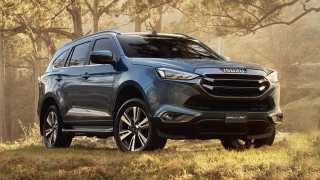TRD stands for Toyota Racing Development, the in-house competition department with a rich history of global motor sport programs and development of high-performance parts spanning decades. Linking that competition heritage with - of all things - a high-riding 4x4 ute for the second time (the first was about a decade ago) could be seen as another cynical marketing exercise; even more so given that the changes this time are purely cosmetic. rather than racy.
The TRD Accessory Pack is available only on the top-of-the-line Hilux SR5+, with its leather-accented interior trim and power-adjustable driver’s seat. The TRD 'special' is available in a choice of white ($58,990) or black ($59,540) with six-speed manual, or an extra $2000 if you opt for the six-speed automatic.

Our test vehicle was black with auto, which, at $61,540 is the most expensive Hilux in the range. It’s also more than Holden’s top-shelf Colorado Z71 auto ($57,190), about line-ball with the Ranger Wildtrak auto ($61,790) and substantially less than VW’s Amarok V6 Ultimate ($67,990).
The TRD package consists of 15 new components. Seven are from TRD, including a luminous red front skid plate, bespoke grille, lower bumper cover, wheel arch flares, mudflaps, floor mats and gear-knob (autos only). The rest of the kit includes matt black 18-inch alloy wheels with 265/60R18 highway tyres, black sports bar, black body side and bonnet mouldings, towing kit, cargo bed liner, soft tonneau cover and taillight covers.

















